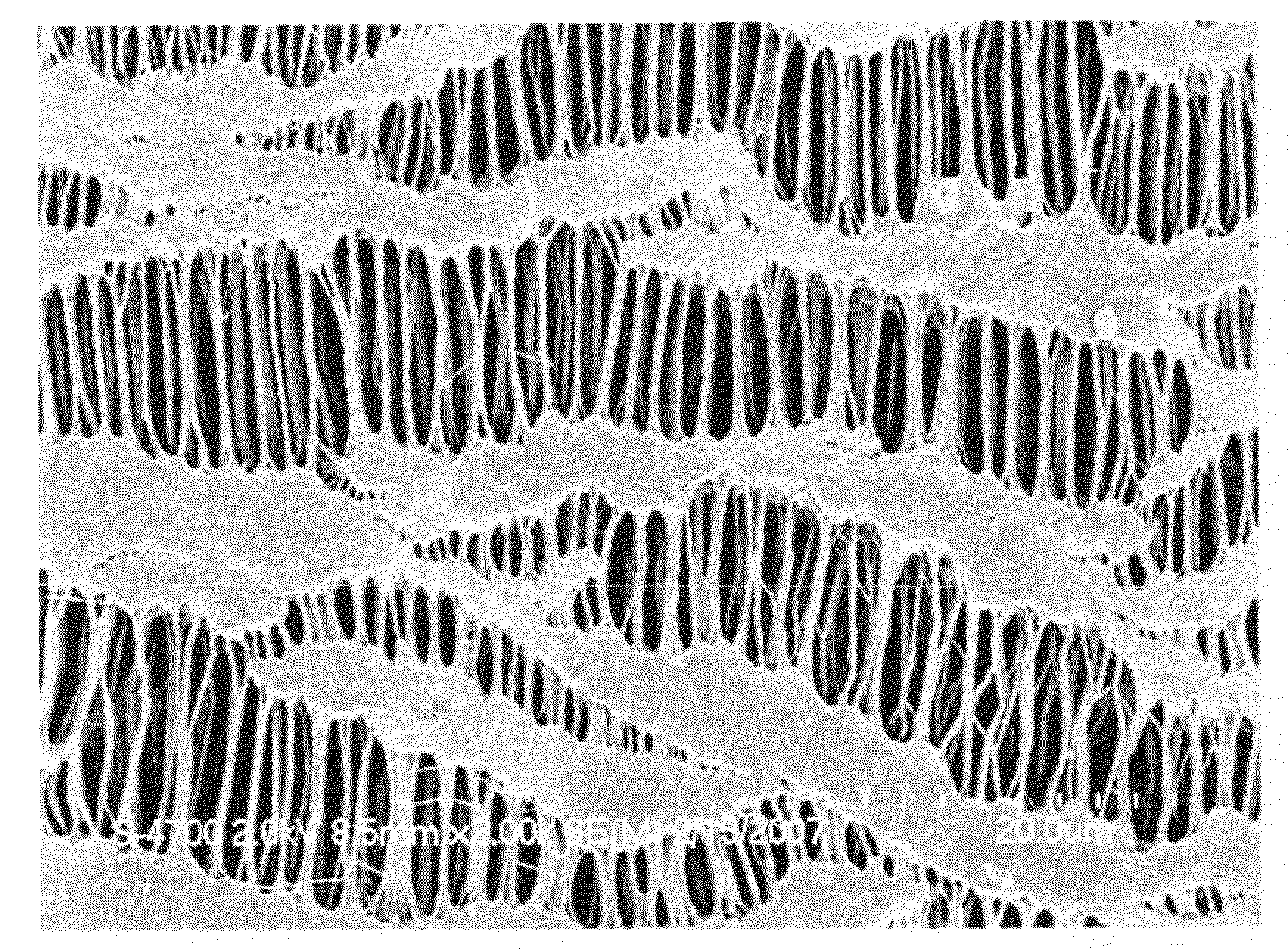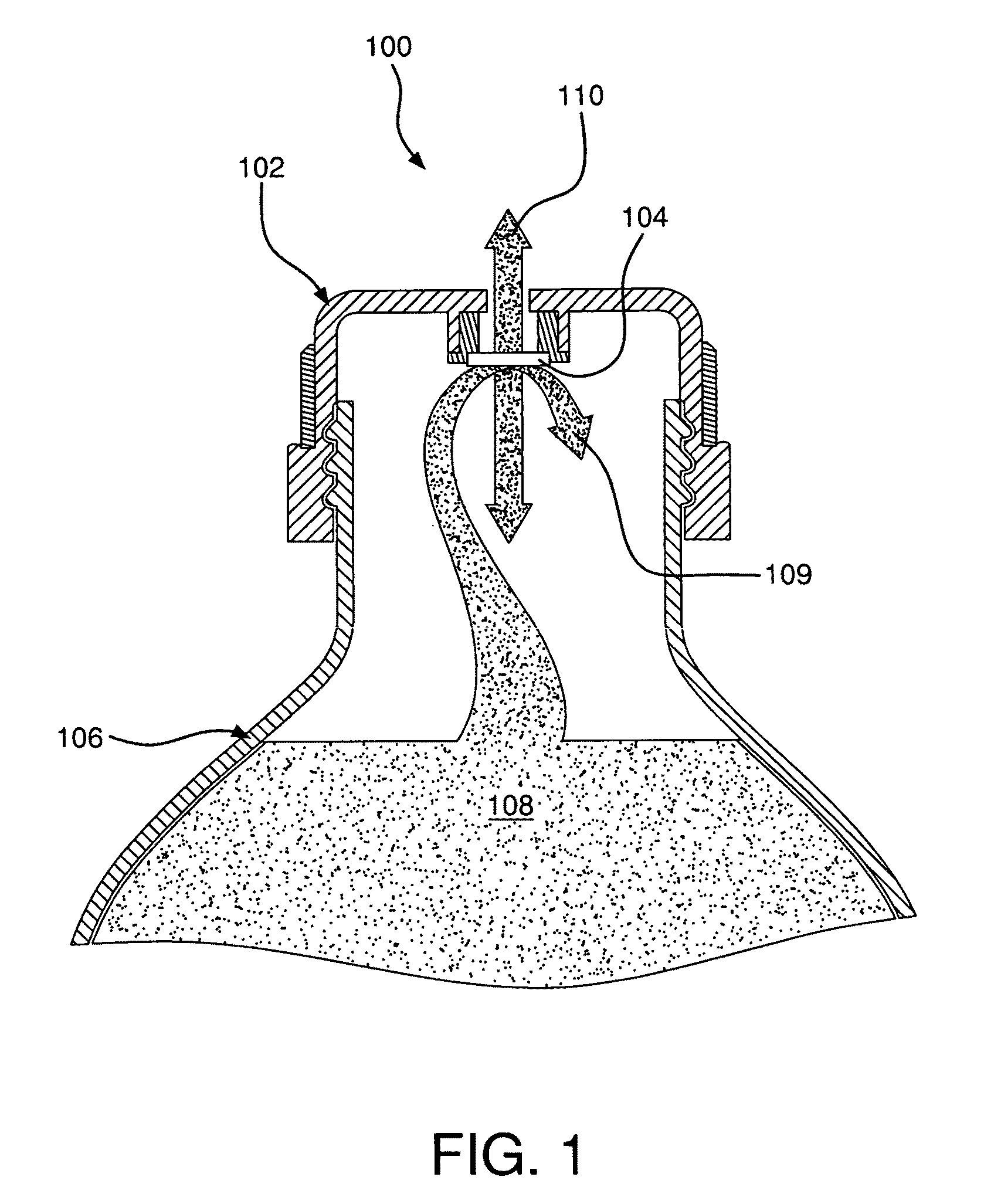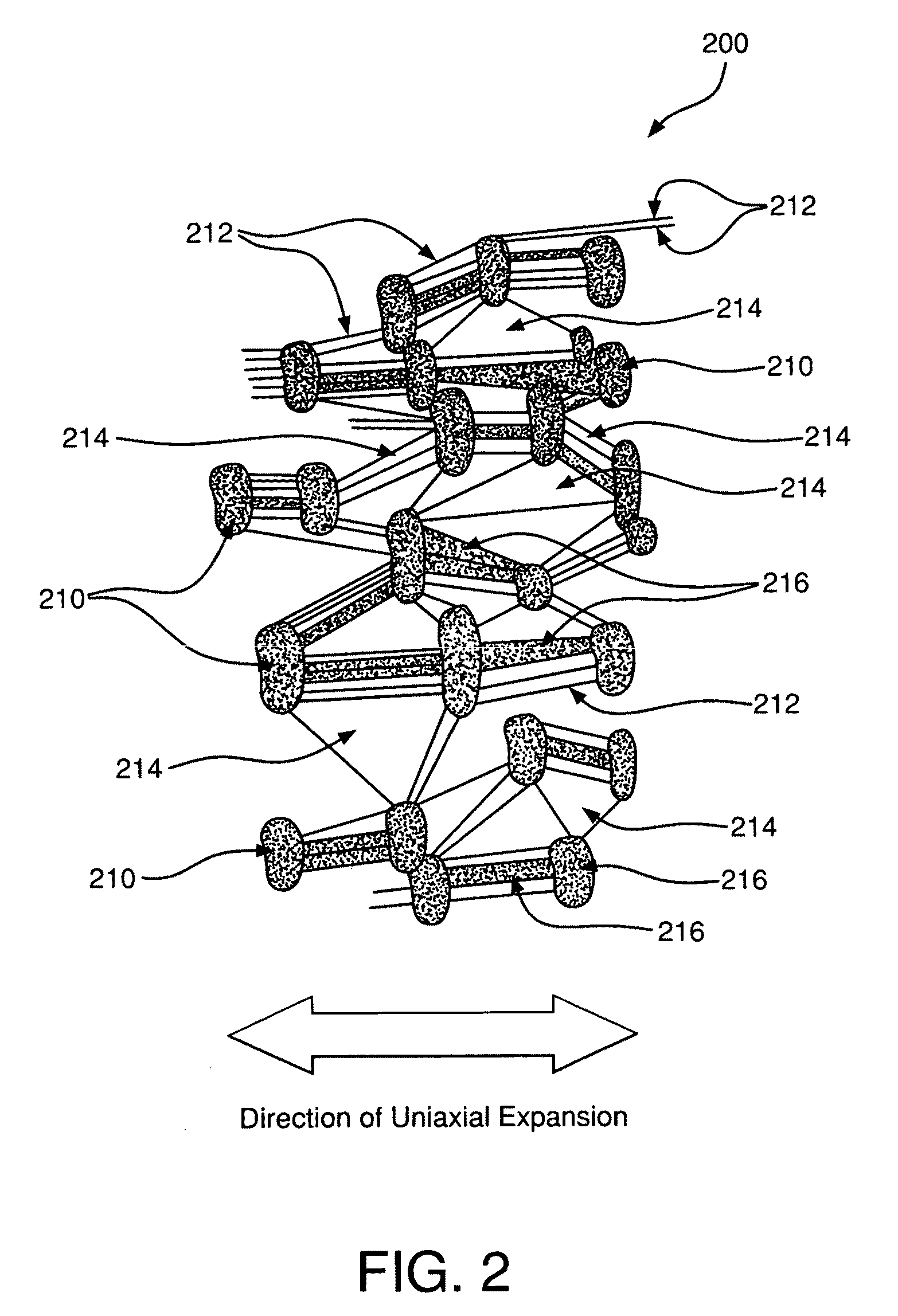Composite material
a technology of composite materials and materials, applied in the field of composite materials, can solve the problems of clogging vents, over-inflating containers, and many new-developed liquid cleaners having a higher viscosity than previously used, so as to improve the mechanical integrity of the gas-permeable composite, prevent wet pores, and improve the effect of liquid repellency
- Summary
- Abstract
- Description
- Claims
- Application Information
AI Technical Summary
Benefits of technology
Problems solved by technology
Method used
Image
Examples
example 3
[0439]The substrate 1 was coated with a coating solution comprising 1 wt. % Teflon® AF1600 and 1 wt. % PFPE using the continuous coating process A. The total coating laydown was about 7.5 g / m2.
[0440]The coating solution was obtained by placing 1 g of Teflon® AF1600 and 1 g of PFPE (Fomblin® Y LVAC 25 / 6) in 98 g of the perfluorinated solvent PF-5070 (from 3M company) to result in a 1 wt. % Teflon® AF1600 / 1 wt. % PFPE coating solution. The mixture was stirred around 6 hours at room temperature until the Teflon® AF1600 was completely dissolved.
[0441]The resultant coated Example 3 showed an oil-rating of 7, an air flow of 15.3 Gurley seconds, a WEP of about 0.86 bar and a LEP of about 0.26 bar.
[0442]The residual air flow after air flow recovery test was 0.0 l / h / cm2 (at a pressure of 12 mbar). Therefore this sample showed no air flow recovery after exposure to the test liquid as described in air flow recovery test.
[0443]All measured data are shown in Table 2 below.
example 4
[0444]The substrate 1 was coated with a coating solution comprising 1 wt. % Teflon® AF1600 and 5 wt. % PFPE (Fomblin® Y LVAC 25 / 6) using the continuous coating process A. The total coating laydown was about 23.5 g / m2.
[0445]The coating solution was obtained by placing 1 g of Teflon® AF1600 and 5 g of PFPE (Fomblin® Y LVAC 25 / 6) in 94 g of the perfluorinated solvent PF-5070 (from 3M company) to result in a 1 wt. % Teflon® AF1600 / 5 wt. % PFPE coating solution. The mixture was stirred around 6 hours at room temperature until the Teflon® AF1600 was completely dissolved.
[0446]The resultant coated substrate 1 had an oil-rating of 6, a Gurley number of about 12.5 seconds, a WEP of about 0.79 bar and a LEP of about 0.19 bar. The initial air flow of coated substrate 1 was about 3.87 l / h / cm2 (measured at a pressure of 12 mbar).
[0447]This sample showed a residual air flow of about 2.79 l / h / cm2 (measured at 12 mbar) after air flow recovery test. This corresponded to an air flow recovery of 72%.
[...
example 5
[0450]The substrate 1 was coated with a coating solution comprising 1 wt. % Teflon® AF1600 and 10 wt. % PFPE using the continuous coating process A. The total coating laydown was about 42.1 g / m2.
[0451]The coating solution was obtained by placing 1 g of Teflon® AF1600 and 10 g of PFPE (Fomblin® Y LVAC 25 / 6) in 89 g of the perfluorinated solvent PF-5070 (from 3M company) to result in a 1 wt. % Teflon® AF1600 / 10 wt. % PFPE coating solution. The mixture was stirred around 6 hours at room temperature until the Teflon® AF1600 was completely dissolved.
[0452]The resultant coated substrate had an oil-rating of 5, a Gurley number of about 11 seconds, a WEP of about 0.73 bar and a LEP of about 0.12 bar. The initial air flow of coated substrate 1 was 4.76 l / h / cm2 (measured at a pressure of 12 mbar).
[0453]This sample showed a residual air flow of about 3.58 l / h / cm2 (measured at a pressure of 12 mbar) after air flow recovery test. This corresponded to an air flow recovery of 75.2%.
[0454]Therefore...
PUM
| Property | Measurement | Unit |
|---|---|---|
| surface tension | aaaaa | aaaaa |
| viscosity | aaaaa | aaaaa |
| gas-permeable | aaaaa | aaaaa |
Abstract
Description
Claims
Application Information
 Login to View More
Login to View More - R&D
- Intellectual Property
- Life Sciences
- Materials
- Tech Scout
- Unparalleled Data Quality
- Higher Quality Content
- 60% Fewer Hallucinations
Browse by: Latest US Patents, China's latest patents, Technical Efficacy Thesaurus, Application Domain, Technology Topic, Popular Technical Reports.
© 2025 PatSnap. All rights reserved.Legal|Privacy policy|Modern Slavery Act Transparency Statement|Sitemap|About US| Contact US: help@patsnap.com



